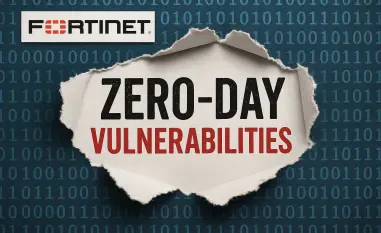In an era where cyber threats strike with alarming frequency, consider the staggering reality that ransomware attacks alone have surged by over 30% in the past year, costing global businesses billions in damages, and organizations now stand at a critical juncture, tasked with safeguarding sensitive data against sophisticated adversaries ranging from nation-state actors to underground cybercriminals. The choice of threat intelligence deployment—whether cloud-native or on-premises—has become a pivotal decision in building robust cybersecurity defenses. This comparison delves into the nuances of both approaches, examining their strengths and challenges in addressing the relentless wave of digital risks. By exploring key dimensions such as scalability, cost, and security, this analysis aims to illuminate the path for enterprises striving to stay ahead of evolving threats.
Understanding Threat Intelligence: Cloud-Native and On-Premises Explained
Threat intelligence serves as the backbone of modern cybersecurity, providing actionable insights to detect, analyze, and mitigate cyber risks before they escalate into full-blown crises. It encompasses the collection and interpretation of data on potential threats, enabling organizations to anticipate attacks like zero-day exploits or insider breaches. This strategic layer of defense is indispensable in a landscape where adversaries continuously refine their tactics, making proactive measures more critical than ever.
Cloud-native threat intelligence operates on scalable, internet-based platforms, seamlessly integrating with hybrid or multi-cloud environments. Such systems leverage the power of distributed resources to process vast datasets in real time, offering agility in threat detection across diverse infrastructures. This model aligns with the needs of organizations embracing digital transformation, where flexibility and remote accessibility are paramount.
In contrast, on-premises threat intelligence is deployed within an organization’s own infrastructure, emphasizing localized control and tailored configurations. Housed on dedicated servers and hardware, this approach allows for meticulous oversight of data handling and security protocols. It often appeals to entities prioritizing direct management over their defensive mechanisms, especially in sectors with stringent compliance demands.
The relevance of both models cannot be overstated amid escalating threats like ransomware and state-sponsored campaigns that exploit vulnerabilities at an unprecedented scale. Each approach addresses distinct organizational priorities, from rapid adaptability to regulatory adherence. This sets the foundation for a deeper exploration of how cloud-native and on-premises solutions stack up against modern cybersecurity imperatives.
Key Dimensions of Comparison Between Cloud-Native and On-Premises Solutions
Scalability and Flexibility in Deployment
Cloud-native threat intelligence excels in scalability, harnessing elastic resources to adapt to fluctuating data volumes and threat landscapes. These platforms dynamically allocate computing power as needed, ensuring seamless performance during sudden spikes in cyber activity. For instance, a multinational corporation operating across multiple cloud environments can instantly expand its threat monitoring capabilities without hardware constraints.
On-premises solutions, however, face limitations in flexibility, often requiring substantial investments in physical infrastructure to scale. Expanding capacity typically involves procuring additional servers and manual upgrades, which can delay responses to emerging risks. A regional bank, for example, might struggle to ramp up its systems swiftly during a widespread phishing campaign targeting its sector.
This disparity highlights a fundamental difference: cloud-native systems cater to dynamic, growth-oriented setups, while on-premises deployments may lag in agility, better suiting static environments with predictable needs. The choice hinges on how quickly an organization must pivot in the face of evolving digital dangers.
Cost Structures and Financial Implications
The financial model of cloud-native threat intelligence often revolves around subscription or pay-as-you-go pricing, providing predictability in budgeting. Expenses scale with usage, allowing smaller enterprises to access advanced tools without massive initial outlays. However, these recurring costs can accumulate over time, potentially straining long-term finances for organizations with extensive needs.
On-premises solutions, by contrast, demand significant upfront investments in hardware, software licenses, and installation. Beyond the initial spend, ongoing maintenance and periodic upgrades add to the financial burden. Large enterprises with substantial capital may find value in ownership, as it can offer cost efficiency over decades compared to continuous cloud subscriptions.
This cost dichotomy shapes strategic planning: cloud-native setups favor organizations seeking minimal entry barriers and operational flexibility, while on-premises options may appeal to those prioritizing long-term asset control. Assessing the total cost of ownership against budgetary constraints becomes essential in this evaluation.
Security, Control, and Data Privacy
Cloud-native systems, while equipped with robust security protocols, often raise concerns about data sovereignty and reliance on third-party providers. Sensitive information stored off-site may be subject to varying regional regulations, posing risks of non-compliance. Despite encryption and access controls, the shared nature of cloud environments can introduce vulnerabilities if misconfigured.
On-premises threat intelligence offers heightened control, with data and systems residing within an organization’s direct oversight. This setup is particularly favored by industries like healthcare or finance, where strict regulatory mandates demand localized data handling. The ability to customize security measures to exact specifications further bolsters confidence in safeguarding critical assets.
Balancing these aspects reveals trade-offs: cloud-native deployments risk external dependencies but benefit from provider-managed updates, whereas on-premises systems bear the burden of securing physical and digital perimeters themselves. The decision often rests on an entity’s risk tolerance and legal obligations surrounding data protection.
Challenges and Limitations of Each Approach
Cloud-native threat intelligence grapples with challenges tied to its internet-dependent nature, such as latency during peak usage or connectivity disruptions. Organizations may also face vendor lock-in, where switching providers becomes costly due to entrenched integrations. These issues can hinder operational continuity, especially for businesses reliant on uninterrupted threat monitoring.
Additionally, compliance with data protection laws like GDPR poses a hurdle for cloud solutions, as data residency requirements may conflict with off-site storage. The risk of third-party breaches further complicates trust in external platforms. Such factors demand careful consideration of service agreements and geographic data policies.
On-premises systems, meanwhile, contend with high maintenance demands, requiring dedicated staff to manage hardware and software updates. The lack of in-house expertise can exacerbate delays in adapting to new threats, leaving systems outdated. This resource intensity often strains smaller organizations unable to sustain specialized teams or infrastructure overhauls.
Moreover, the slower pace of innovation in on-premises environments can lag behind the rapid evolution of cyber threats. Balancing these limitations against organizational capacity and risk profiles becomes a pivotal aspect of decision-making, as the burden of system upkeep can outweigh the benefits of control for some entities.
Making the Choice: Which Model Suits Your Needs?
Comparing cloud-native and on-premises threat intelligence reveals distinct strengths and weaknesses across scalability, cost, and security dimensions. Cloud-native solutions shine in adaptability and ease of deployment, ideal for dynamic or resource-constrained organizations embracing cloud-first strategies. On-premises setups, however, provide unmatched control and compliance alignment, fitting enterprises with strict regulatory needs or a preference for direct oversight.
Recommendations vary by use case: startups or mid-sized firms with limited budgets might lean toward cloud-native platforms for their scalability and lower entry costs, while government agencies or financial institutions often favor on-premises for their emphasis on data sovereignty. Each model addresses specific operational priorities, from rapid expansion to meticulous governance.
A hybrid approach emerges as a compelling middle ground, blending cloud agility with on-premises security for tailored strategies. This combination allows organizations to leverage external scalability while retaining critical data in-house. Aligning the choice with long-term cybersecurity goals, threat exposure, and internal capabilities ensures a resilient defense posture against an ever-shifting digital threatscape.
Final Reflections
Looking back, the exploration of cloud-native and on-premises threat intelligence underscored the nuanced balance required in cybersecurity planning. As organizations navigate this decision, the path forward crystallizes around actionable steps tailored to unique needs. Moving ahead, entities should prioritize comprehensive risk assessments to pinpoint whether scalability or control takes precedence in their operations.
Beyond immediate choices, fostering partnerships with threat intelligence providers—whether cloud-based or localized—proves vital in staying abreast of emerging dangers. Investing in staff training to bridge expertise gaps also emerges as a key consideration, ensuring that chosen systems are leveraged to their fullest potential. These steps, grounded in strategic foresight, pave the way for sustained resilience against cyber adversaries in a complex digital era.













